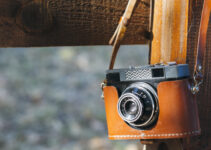Do you need to take a camera out of your bag at the airport? This question often buzzes through the minds of travelers, causing a mix of curiosity and concern. It’s a common query among photography enthusiasts and frequent flyers alike.
In short, yes, you typically need to remove your camera from your bag during airport security screenings.
This process ensures a clear view of the device, helping security personnel assess it thoroughly and efficiently.
But is there more to this rule than meets the eye? Are there exceptions or specific guidelines travelers should be aware of?
Delve deeper into the nuances of airport security protocols regarding cameras with insights from renowned travel guiding you through hassle-free travels with your beloved camera gear.
Do you need to take a camera out of a bag at the airport?
Yes, you typically need to take a camera out of your bag at the airport security checkpoint.
The Transportation Security Administration (TSA) in the United States, and similar security agencies in other countries, often require that electronic devices larger than a cell phone be placed in a separate bin for X-ray screening.
This includes cameras, tablets, and laptops. The reason for this is to provide a clear and unobstructed view of the device, ensuring there are no hidden threats or prohibited items within the electronics.
However, policies can vary slightly depending on the country and the airport, so it’s always a good idea to check the specific requirements of the airports you will be traveling through.
Additionally, some newer screening technologies might allow for keeping electronics in bags, but these are not yet widely implemented.
Here can you wash lowepro camera bag?
Always follow the instructions of the security personnel at the checkpoint.
What needs to be taken out of bag at airport security?
Do I have to take my film camera out at TSA?
Do you have to take everything out of your bag at airport security?
Things to know before screening your camera gears
Before screening your camera gear at airport security, consider the following tips:
- Separate Electronics: Remove all larger electronic devices, including cameras, from your bag and place them in a separate bin for X-ray screening. This ensures a clear view for security personnel.
- Film Protection: If you’re carrying undeveloped film, request a hand inspection. X-ray machines can damage film, especially high-ISO varieties. Place film in a clear plastic bag for easy access.
- Lenses and Accessories: Keep lenses and small accessories organized and easily accessible. They generally can stay in your bag but may require separate screening if requested by TSA officers.
- Pack Carefully: Use padded camera bags or inserts to protect your gear from damage during handling. Secure all items to prevent them from shifting.
- Arrive Early: Allow extra time for potential additional screening of your camera gear.
Here, can you use camera bag as a diaper bag?
By preparing your camera equipment properly, you can ensure a smoother and safer security screening process.
TSA process of screening your Camera bags
Airline Restrictions
Airline restrictions vary but generally include the following key points:
- Carry-On Size and Weight: Airlines have specific size and weight limits for carry-on luggage, usually around 22 x 14 x 9 inches and 15-22 pounds. Check your airline’s website for precise measurements.
- Checked Baggage: Restrictions on checked baggage typically involve size (linear dimensions around 62 inches) and weight (usually up to 50 pounds). Overweight or oversized bags incur additional fees.
- Prohibited Items: Items like flammable materials, weapons, and sharp objects are prohibited in both carry-on and checked baggage. Check the airline and TSA websites for detailed lists.
- Liquids: In carry-ons, liquids must be in containers of 3.4 ounces or less, placed in a single quart-sized, resealable plastic bag.
- Special Items: Some items, like sports equipment, musical instruments, and medical supplies, have specific restrictions or requirements. Notify the airline in advance if you’re traveling with these.
Always review your airline’s specific policies before packing to ensure compliance and avoid any surprises at the airport.
Here, can you bring a camera bag to a duck’s game?
Do’s of flying with camera gears
1. Pack Carefully and Use Proper Protection
When flying with camera gear, careful packing is crucial. Use a well-padded camera bag or case designed to protect against shocks and bumps.
Consider a hard case for checked luggage to prevent damage from rough handling. Inside the bag, secure individual items with padded dividers to prevent them from moving around.
Wrap delicate items, like lenses and cameras, in soft cloths or bubble wrap for extra protection. Remember to remove batteries and store them separately to prevent accidental activation or damage.
2. Know the Airline’s Carry-On and Checked Baggage Policies
Each airline has specific policies regarding the size, weight, and number of carry-on and checked bags allowed. Before your trip, review these policies to ensure your camera gear complies.
Typically, it’s best to carry expensive and fragile items, like cameras and lenses, in your carry-on to avoid the risk of damage in checked luggage.
Check the weight limits and ensure your carry-on bag is within the allowed dimensions to avoid additional fees or the need to check your gear unexpectedly.
3. Be Prepared for Security Screening
At the airport, you’ll need to pass through security screening.
Remove larger electronic devices, such as cameras and laptops, from your bag and place them in separate bins for X-ray screening.
If you’re carrying undeveloped film, request a hand inspection to prevent X-ray damage.
Organize your gear to make the screening process as smooth as possible, with smaller items easily accessible in case they need additional inspection.
Follow TSA guidelines and be patient with security personnel.
4. Protect Your Batteries and Memory Cards
Batteries and memory cards are essential components of your camera gear that need special attention.
Carry spare batteries in your carry-on bag, not checked luggage, to avoid issues with temperature changes and potential fire hazards.
Use protective cases for batteries to prevent short-circuiting. For memory cards, use cases to protect them from physical damage and keep them organized.
Consider carrying backups of important memory cards in separate locations to safeguard against loss or damage.
5. Purchase Travel Insurance
Investing in travel insurance that covers your camera gear can provide peace of mind. Ensure the policy covers theft, loss, and damage, both in transit and at your destination.
Check the coverage limits and any exclusions or requirements, such as using specific types of bags or locks.
Keep receipts and documentation of your gear, including serial numbers and photos, to facilitate any potential claims.
Travel insurance can be a valuable safety net if something goes wrong with your equipment while traveling.
6. Backup Your Photos and Data
Regularly backing up your photos and data is essential when traveling with camera gear.
Use external hard drives, cloud storage, or both to create multiple copies of your files. Backup your photos after each shoot to ensure you don’t lose valuable images if your gear is lost or damaged.
Consider using portable storage devices that don’t require internet access for on-the-go backups.
Keeping your backups in a separate location from your primary gear can further protect against loss or theft.
By following these do’s, you can ensure your camera gear stays safe and functional throughout your travels, allowing you to focus on capturing memorable moments.
Don’t of flying with camera gears
Related faq’s
Can i bring camera batteries on a plane?
Yes, you can bring camera batteries on a plane. Lithium-ion batteries commonly used in cameras are allowed in carry-on baggage, but not in checked luggage due to safety concerns.
Spare batteries must be individually protected to prevent short-circuiting, either in their original packaging or with tape over the terminals.
The TSA typically allows up to two larger lithium-ion batteries (between 100 and 160 watt-hours) per passenger.
Smaller batteries (under 100 watt-hours) are generally unrestricted in quantity. Always check your airline’s specific regulations before flying to ensure compliance.
Can digital cameras go through airport x-ray machines?
Yes, digital cameras can go through airport X-ray machines without significant risk of damage.
Modern X-ray machines used for carry-on baggage screening are generally safe for electronic devices such as cameras.
However, for film cameras or undeveloped film, it’s recommended to request a manual inspection to avoid potential X-ray damage.
Digital cameras, memory cards, and other electronic accessories are designed to withstand the X-ray screening process without harm.
Just ensure that your camera is well-protected in a padded bag or case to prevent physical damage during handling.
Can i carry cctv camera in flight?
Yes, you can generally carry a CCTV camera in your carry-on baggage when flying.
However, it’s essential to check with your airline and the specific country’s regulations regarding electronic devices and security screening.
Make sure the CCTV camera is properly packed and secured in a suitable case or bag to prevent damage during handling.
Also, be prepared to remove the CCTV camera from your bag during security screening for X-ray inspection.
Following airline guidelines and TSA regulations will help ensure a smooth travel experience with your CCTV camera.
Can i carry my camera around my neck on a plane?
Yes, you can typically carry your camera around your neck on a plane.
Cameras are considered personal items and are allowed in addition to your carry-on bag and personal item, such as a purse or laptop bag.
However, it’s essential to ensure that your camera doesn’t obstruct movement in the cabin or pose a safety hazard during takeoff, landing, or in case of turbulence.
Keep your camera secure and be mindful of its weight to avoid discomfort during the flight.





